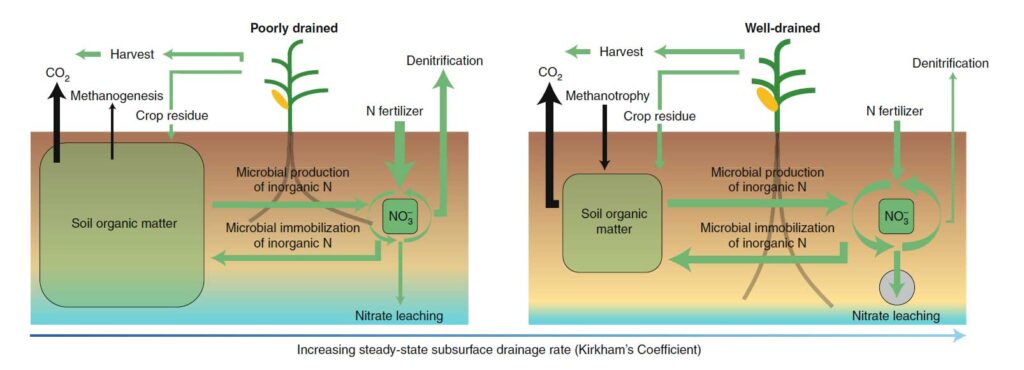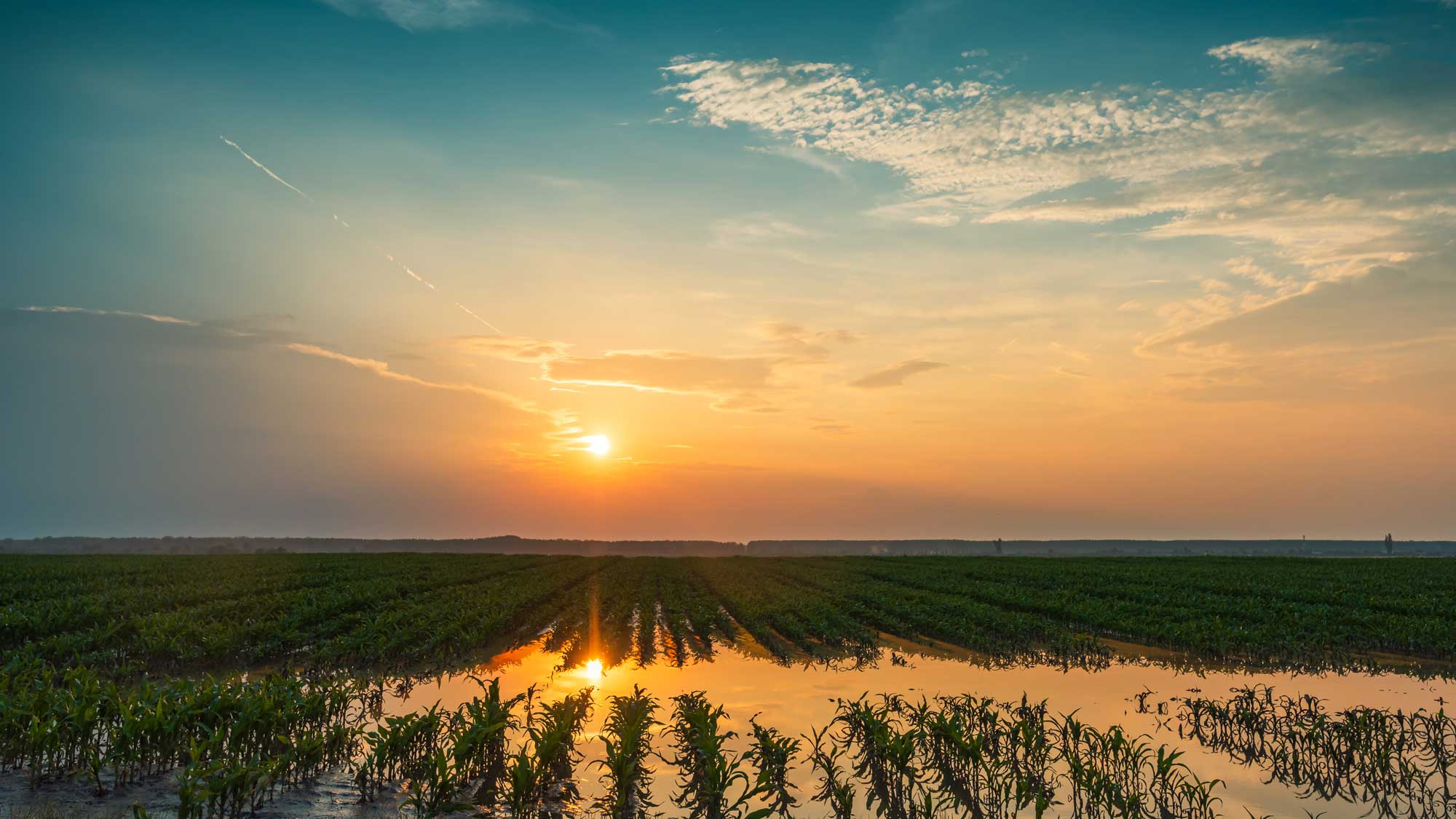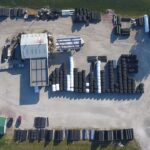As seen in the Tried & True Summer 2025 issue

Dr. Michael Castellano,
Iowa State University
When most people think about field drainage, they picture one thing: getting water off the land so crops don’t drown. Simple enough, right?
Not quite.
Thanks to scientists like Dr. Michael Castellano at Iowa State University, we now know that drainage isn’t just about removing water—it’s about managing it. And when you manage water better, you manage nitrogen better. And when you manage nitrogen better, you’re saving money, improving yields and protecting the environment. Suddenly, your humble pipe line looks a lot like a Swiss
Army knife.
Dr. Castellano leads groundbreaking research in soil biogeochemistry, specifically how nitrogen moves, transforms and—too often—gets wasted. His work with the Iowa Nitrogen Initiative, a collaboration between public and private ag powerhouses, is setting a new bar for sustainable farming.
Their mission? Help farmers apply just the right amount of nitrogen—no more, no less—by leveraging real-time data, smarter infrastructure and (you guessed it) conservation drainage.
What’s Really at Stake With Drainage?
Let’s talk about nitrogen. It’s expensive. It’s essential. And it’s slippery—literally.
Crops only absorb a portion of the nitrogen you apply. The rest? It can leach into waterways, evaporate as greenhouse gas or hang around doing nothing while your yields suffer. It’s a classic case of “paying more to get less.”
That’s where drainage comes in. Properly drained fields create the ideal soil conditions for microbes to do their job—making nitrogen more available to plants and less likely to escape
as pollutants.
One study using the Agricultural
Production Systems Simulator (APSIM) found that corn in drained systems needed 12% less nitrogen than undrained fields to hit optimal yields. Let that sink in: same yield, less input.
“Drainage allows nitrogen mineralization from organic matter to happen more effectively,” Dr. Castellano explains. “That means less fertilizer needed overall.”
Translation: You’re not just draining water—you’re tapping into nitrogen that’s already there. Free fertilizer, anyone?
Cutting Costs Without Cutting Corners
Fertilizer prices have been on a wild ride. When you’re throwing thousands of dollars into inputs, playing the guessing game is risky business.
“Right now, most fertilizer recommendations are based on field averages,” Dr. Castellano says. “That means 30 to 40% of fields are getting too much or too little.”
Conservation drainage, especially controlled drainage, tightens that range. His research shows these systems can cut year-to-year variability in nitrogen needs by 75%. That’s a big deal.
More predictability = less financial stress = better sleep at night.Thanks to this project, you may recognize these strategies and systems, which are more commonly implemented today.

The Water Quality Elephant in the Field
Let’s address the murky water in the room: drainage gets a bad rap for contributing to nitrate runoff.
Yes, it can increase nitrate levels in water—if left unmanaged. But modern systems are designed to tackle that head-on.
Dr. Castellano is a vocal advocate for pairing drainage upgrades with edge-of-field conservation practices like:
- Constructed wetlands
- Controlled drainage gates
- Denitrifying bioreactors
All these tools help capture and remove nitrogen before it reaches creeks, rivers or your neighbor’s fishing hole.
Drainage is not incompatible with water quality,” Dr. Castellano says. “In fact, it gives us the opportunity to solve water quality challenges without sacrificing productivity.”
Win-win.
Surprise: Drainage Can Fight Climate Change, Too
Another twist: well-managed drainage systems reduce greenhouse gas emissions—especially nitrous oxide (N₂O), a gas that’s about 300 times more potent than carbon dioxide.
In waterlogged soils, nitrogen has a higher chance of escaping as nitrous oxide. But drain the excess moisture, and you keep nitrogen where it belongs: in the soil, feeding your crops.
Dr. Castellano’s research shows that drained fields emit three to four times less nitrous oxide than soggy, undrained fields. Plus, those same systems cut back on the amount of nitrogen fertilizer needed in the first place—an emissions double-whammy.
His team estimates that good drainage can reduce carbon dioxide equivalent emissions by around 2,000 kilograms per hectare per year—roughly the same as the CO₂ released from driving a car 5,000 miles.
So yes—installing a drainage system might just be the most climate-friendly thing you do this year.
Drainage ≠ Ditches: It’s Data-Driven Water Management
Gone are the days when drainage just meant “get water out fast.” Today’s systems are engineered to be smart, seasonal and strategic.
Controlled drainage lets you adjust the water table depending on the time of year.
Shallow systems reduce the risk of nutrient loss.
Constructed wetlands and bioreactors work as cleanup crews at the edge of your field.
“There’s an immediate opportunity to redesign Midwest drainage systems for multiple ecosystem services,” Dr. Castellano says.
In other words, let’s not just fix the flood. Let’s grow the crop, protect the creek, and cut the carbon—all in one go.
So, What’s the Takeaway?
Drainage is no longer just about keeping your boots dry. It’s about:
- Maximizing nitrogen use
- Reducing fertilizer waste
- Protecting water quality
- Lowering greenhouse gas emissions
- Creating more resilient farming systems
As Dr. Castellano puts it, “Drainage is a tool—it’s not about removing water, it’s about managing water better.”
At Fratco, we couldn’t agree more. Whether you’re a contractor installing controlled drainage systems or a farmer trying to dial in your fertilizer budget, the future of drainage is smarter, more sustainable and—thanks to research like this—scientifically sound.
Because in the end, good drainage doesn’t just move water. It moves the entire ag industry forward.
Want to Learn More About Conservation Practices?
Check out our full infographic series on eco-friendly drainage strategies, including constructed wetlands, controlled drainage and bioreactors!












